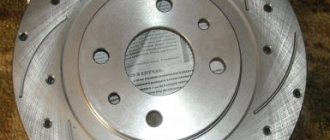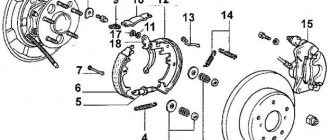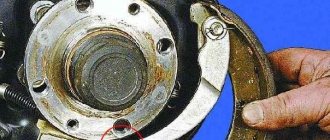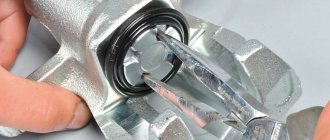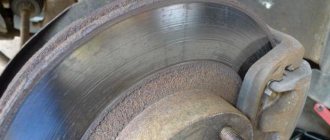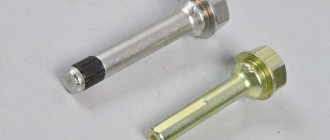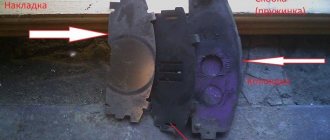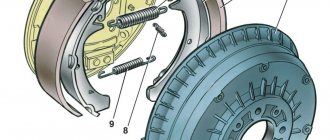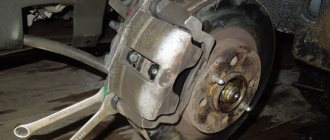In order for the brake system to always be normal, it is necessary to constantly monitor its components. Since brake pads work exclusively on friction, they wear out faster than other parts. It is impossible to say exactly when wear will occur; their conventional operational life is from 8 to 15 thousand kilometers during normal driving without “recklessness”. Checking the brake pads gives you an idea of when to replace them.
Brake system
Each vehicle is equipped with:
- braking mechanism;
- parking brake;
- spare brake . Used in emergency cases, when the main brakes fail. In passenger cars, this is usually achieved by dividing the brake system into several circuits diagonally or front/rear.
The brake system consists of a drive and a braking mechanism with a drum or disc, as well as brake pads. Drum brakes are now used less frequently, although they last longer. Today, almost all cars have a disc brake; such a system is considered fixed and has a caliper and two pads that are stable in one position. When the brake pedal is pressed, they compress the disc. There are also systems with a floating block; they are more complex. During braking, the caliper piston touches one of them, it moves away, leans against the disc and moves it towards the other, after which clamping occurs.
The main reasons affecting the wear rate
A brake pad has two components: a frame and a friction lining. In short, it is the pad that performs the main task of braking, stopping the brake disc with its friction. Front brake pads wear out two to three times faster than the rear ones. This is because a large load during braking falls on the front wheel mechanism, and the weight of the car is redistributed to the front axle. The wear rate is directly affected by:
- the material from which the parts are made. Each manufacturer sets its own thickness for the product, so you don’t need to look at the price and purchase original linings;
- weight vehicle;
Pads - sudden changes in air temperature;
- driving conditions . Sharp accelerations and emergency braking certainly shorten the life of products;
- brake assembly design . If there is a failure in the cylinders, this will also affect the pads.
It is noteworthy that in the winter season, replacement is performed less frequently, which suggests that in winter there are few maneuvers while driving.
Diagnosis of the cause by wear
Most often, the pads wear out differently on all wheels in a car. Moreover, the front axle is loaded more heavily during braking, since the body tilts forward due to inertia, and the rear axle is unloaded. If the driver uses hard braking, the linings will wear out much faster.
Many modern models are equipped with an ESP system (how the exchange rate stabilization system works is described separately ). The peculiarity of this device is that it automatically brakes when there is a risk of the car skidding. Although such a system provides safety and control of the vehicle, its frequent operation causes wear on individual pads, and this process cannot be controlled. Otherwise, you have to turn off the device (how this is done is described here ).
Here is a short list of the reasons why frequent or unnatural pad wear occurs.
Wedge wear
The reasons for this effect may be:
- Errors when installing pads;
- The material of the block linings is of poor quality;
- A feature of the design of some brake systems, for example, those that are equipped with additional calipers to improve performance;
- The caliper bracket must effectively guide the part so that all parts of it are simultaneously adjacent to the disc. This may not occur due to poor tightening of the mounting bolt;
- Violation of the rules for tightening the fastening bolt of the bracket can lead to its deformation;
- Malfunctions in the chassis of the car, for example, wear in the wheel bearing, which causes play (this happens extremely rarely);
- Souring of guides;
- The bearing on the struts (or strut) has a bent axle.
Rapid pad wear
Accelerated production of material may be due to the following reasons:
- The pad has the wrong material for the specific vehicle, such as being too soft;
- Aggressive driving;
- The car is equipped with an ESP system;
- Development on the brake disc or drum;
- Incorrect caliper adjustment - the pad is pressed against the surface of the disc or drum;
- The car sits idle for a long time.
